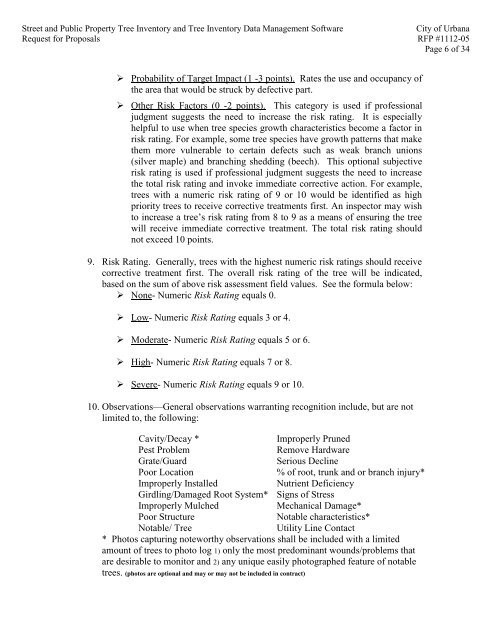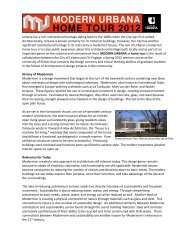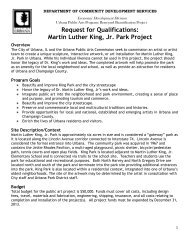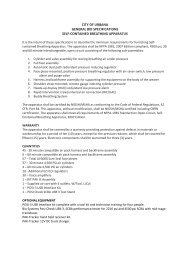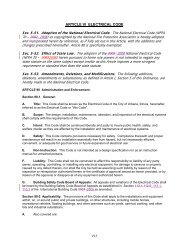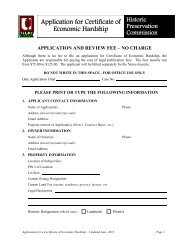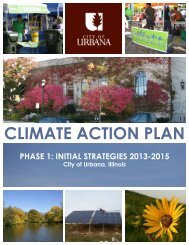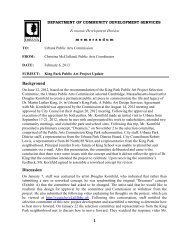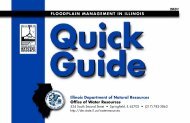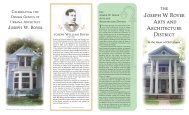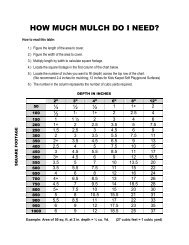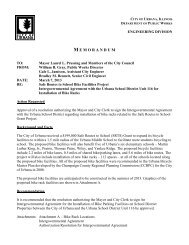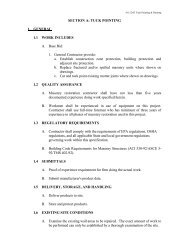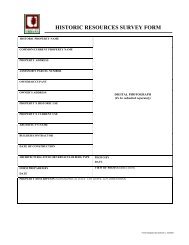RFP #1112-05 Bid Specifications - City of Urbana
RFP #1112-05 Bid Specifications - City of Urbana
RFP #1112-05 Bid Specifications - City of Urbana
Create successful ePaper yourself
Turn your PDF publications into a flip-book with our unique Google optimized e-Paper software.
Street and Public Property Tree Inventory and Tree Inventory Data Management S<strong>of</strong>tware<br />
<strong>City</strong> <strong>of</strong> <strong>Urbana</strong><br />
Request for Proposals <strong>RFP</strong> <strong>#1112</strong>-<strong>05</strong><br />
Page 6 <strong>of</strong> 34<br />
‣ Probability <strong>of</strong> Target Impact (1 -3 points). Rates the use and occupancy <strong>of</strong><br />
the area that would be struck by defective part.<br />
‣ Other Risk Factors (0 -2 points). This category is used if pr<strong>of</strong>essional<br />
judgment suggests the need to increase the risk rating. It is especially<br />
helpful to use when tree species growth characteristics become a factor in<br />
risk rating. For example, some tree species have growth patterns that make<br />
them more vulnerable to certain defects such as weak branch unions<br />
(silver maple) and branching shedding (beech). This optional subjective<br />
risk rating is used if pr<strong>of</strong>essional judgment suggests the need to increase<br />
the total risk rating and invoke immediate corrective action. For example,<br />
trees with a numeric risk rating <strong>of</strong> 9 or 10 would be identified as high<br />
priority trees to receive corrective treatments first. An inspector may wish<br />
to increase a tree’s risk rating from 8 to 9 as a means <strong>of</strong> ensuring the tree<br />
will receive immediate corrective treatment. The total risk rating should<br />
not exceed 10 points.<br />
9. Risk Rating. Generally, trees with the highest numeric risk ratings should receive<br />
corrective treatment first. The overall risk rating <strong>of</strong> the tree will be indicated,<br />
based on the sum <strong>of</strong> above risk assessment field values. See the formula below:<br />
‣ None- Numeric Risk Rating equals 0.<br />
‣ Low- Numeric Risk Rating equals 3 or 4.<br />
‣ Moderate- Numeric Risk Rating equals 5 or 6.<br />
‣ High- Numeric Risk Rating equals 7 or 8.<br />
‣ Severe- Numeric Risk Rating equals 9 or 10.<br />
10. Observations—General observations warranting recognition include, but are not<br />
limited to, the following:<br />
Cavity/Decay *<br />
Improperly Pruned<br />
Pest Problem<br />
Remove Hardware<br />
Grate/Guard<br />
Serious Decline<br />
Poor Location<br />
% <strong>of</strong> root, trunk and or branch injury*<br />
Improperly Installed<br />
Nutrient Deficiency<br />
Girdling/Damaged Root System* Signs <strong>of</strong> Stress<br />
Improperly Mulched<br />
Mechanical Damage*<br />
Poor Structure<br />
Notable characteristics*<br />
Notable/ Tree<br />
Utility Line Contact<br />
* Photos capturing noteworthy observations shall be included with a limited<br />
amount <strong>of</strong> trees to photo log 1) only the most predominant wounds/problems that<br />
are desirable to monitor and 2) any unique easily photographed feature <strong>of</strong> notable<br />
trees. (photos are optional and may or may not be included in contract)


